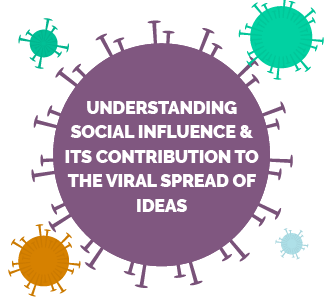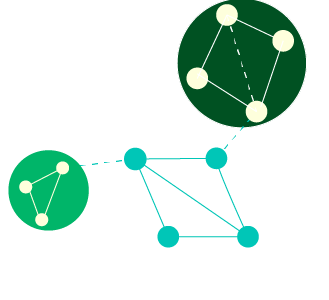What makes something spread like wildfire? And why is it that certain behaviours and ideas experience mass adoption, while others don’t?
Though many believe that the laws of virality are governed by luck and coincidence, there are important similarities between viral behaviours that may imply an element of formula.
We believe that the instigators of viral behaviours often stumble across this formula without even realising it. As a result, thereby creating the illusion that their success was no more than mere chance.
In this article, we’ll examine the nature of the viral spread of ideas, propose a theory for its formula, and reveal how even small businesses can leverage this formula to spread mass awareness of their brand. We’ll also illustrate the importance of understanding social influence when it comes to the viral spread of ideas. By way of a case study, we’ll be looking at the Aerosmith gesture that went viral in the game Second Life.
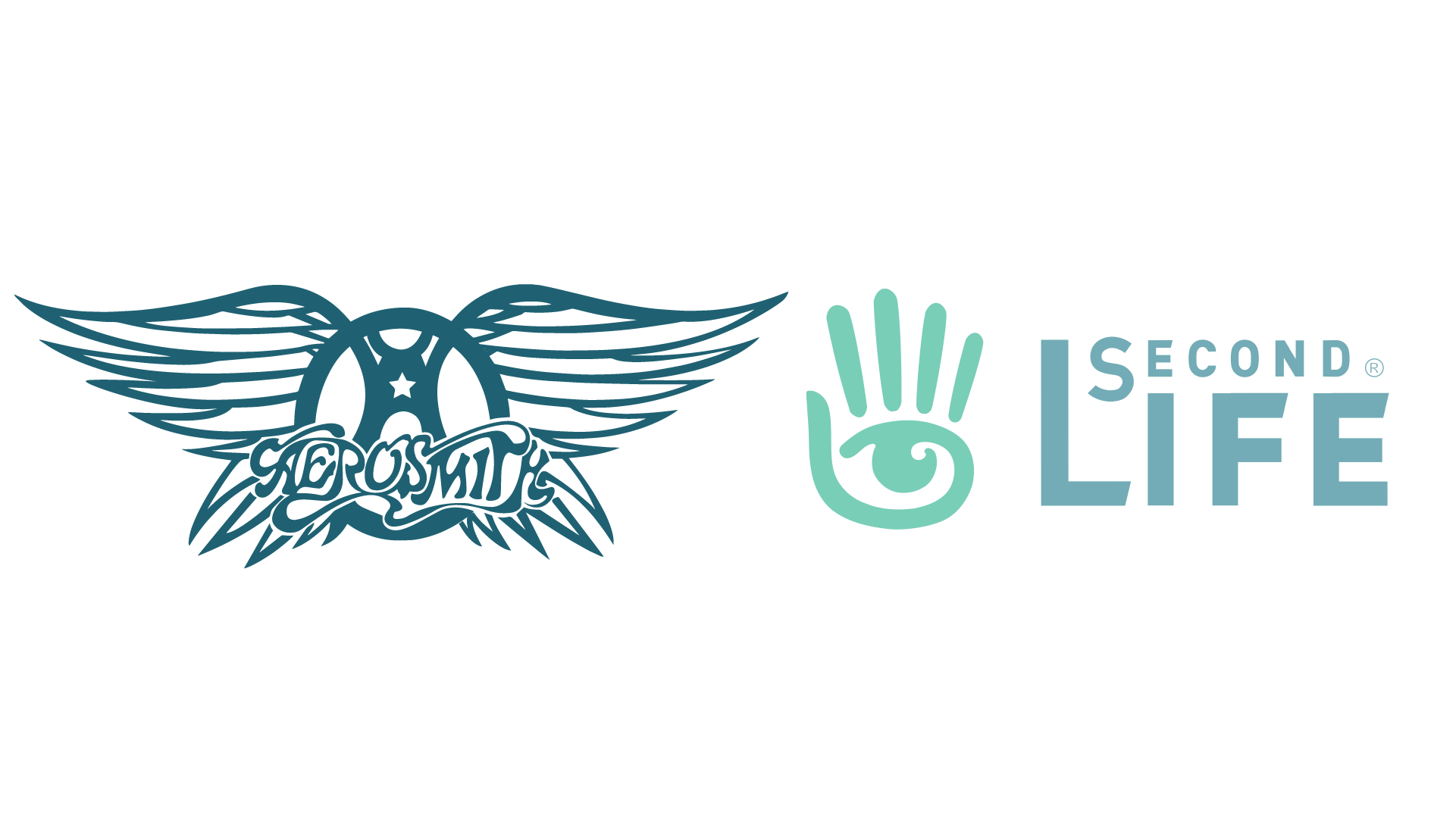
What Do We Mean By ‘Viral’?
According to the Online Etymology Dictionary, the word “viral” is rooted in the word “virus”. In 1999, the word viral was first used to describe the phenomenon of sudden and widespread popularity of specific pieces of content, ideas, or behaviours on the internet.
The word came into use because of the similarities drawn between ideas that spread seemingly overnight online and the spread of a computer virus. Which raises the question, what makes an idea “infectious” enough to spread? And how does social influence come into play?
Aerosmith Second Life Gesture
In a book titled Change: How to Make Big Things Happen by Damon Centola, Centola examines a study of social influence and explores how the Aerosmith Second Life gesture became popular in 2008.
For those of you who don’t know, this gesture involved an animation in which a character throws their hands over their head and makes a horn shape with their fingers. To use this gesture, players would have to add it to their character’s list of assets. The gesture gained massive popularity.
In his consideration of this particular viral phenomenon, Centola concludes that people are: “typically influenced by the percentage of the people we know who are doing something, rather than the total number”.
As an example, let’s say you know ten other players in the game Second Life. Five of these players begin using the Aerosmith gesture, amounting to fifty percent of your network. The weight of this social influence is far greater than it would be if you had 100 friends on Second Life, rather than ten. In this case, if only five people you knew were to adopt the gesture, you are significantly less likely to adopt the gesture yourself.
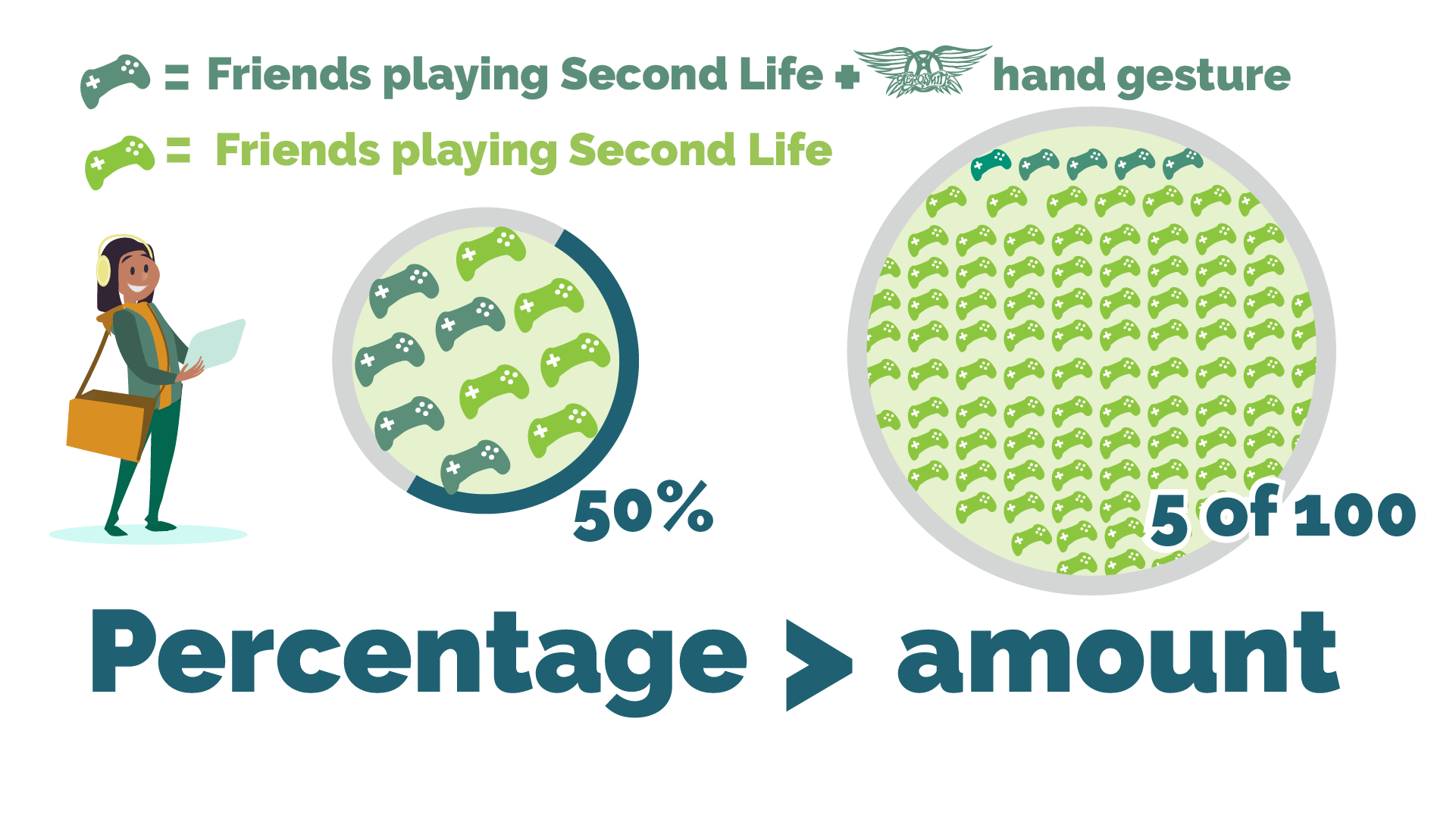
What Does This Mean For Brands?
According to Centola, “a very popular person with about five hundred contacts was about ten times less likely to adopt the Aerosmith gesture than a moderately connected person with only fifty contacts”.
Effectively, this means that the bigger a person’s social network, the more difficult it is to convince them to adopt a new behaviour. The more connections they have, the more of those connections will need to adopt the gesture for them to consider doing so themselves.
When marketing their businesses, many business owners have an exposure-centric approach. This means that they subscribe to the idea that the more exposure they achieve, the greater their returns. This is the basis of TV radio and outdoor advertising; persist in hitting your audience with the same message, and the continual exposure will result in conversions. While there is certainly a correlation between exposure and returns, there are other factors at play that determine how effective mass exposure is.
By way of example, pushing traffic to your website doesn’t necessarily amount to conversions if you have targeted the wrong demographic. Similarly, a bakery having an influencer in the fitness industry advocating for their brand is likely to amount to very little, no matter the size of the influencer’s following.
Despite this, many marketers put what we would argue is too great an emphasis on exposure when advising business owners—and this focus neglects the importance of other factors such as the right kind of social influence.
The Theory of Concentrated Exposure
 In the case of viral behaviours and ideas, as Centola points out, the extent of exposure is not nearly as important as the relevance and density of that exposure within an individual’s social networks—a fact that is especially pertinent to brands hoping to leverage viral content or behaviours to drive awareness of their business.
In the case of viral behaviours and ideas, as Centola points out, the extent of exposure is not nearly as important as the relevance and density of that exposure within an individual’s social networks—a fact that is especially pertinent to brands hoping to leverage viral content or behaviours to drive awareness of their business.
For the purposes of this article, we’ll call this theory of virality “concentrated exposure”.
By concentrated exposure, we mean the tactical spread of awareness that prioritises increasing the percentage of people an individual knows who are adopting a specific behaviour, rather than the total number.
But how do brands go about achieving this? Firstly, let’s think about the merits of viral marketing over other forms of marketing.
Is Viral Marketing Worth It?
For many small businesses just entering the market, there simply isn’t any room in the budget for mass exposure initiatives, such as influencer marketing. We propose, however, that there are means of achieving virality without the need for spending significant sums of money on awareness campaigns.
Let’s say that you hope to encourage the mass adoption of a specific behaviour to spread awareness of your business. There are numerous benefits associated with the use of viral marketing to market your brand.
The most important of these, is that viral marketing serves as a means of spreading awareness. Arguably, in a way that is more organic and appealing than other forms of marketing; this is because the adoptees of these viral behaviours won’t necessarily affiliate the behaviour with marketing. Or more importantly it won’t feel like the individual is being marketed to. Therefore, group adoption is in essence the major campaign enhancer.
Marketing, by its very nature, is an act of manipulation. No one likes to feel manipulated, which is why viral behaviours—when executed right—can work wonders for your business. Instead of feeling that they are being marketed to, your audience will feel that they are simply being influenced by others. As a result, they will perceive this as an indication that the product or behaviour is worth adopting.
Fortnite’s flossing dance is the perfect example of how a viral behaviour or trend can prove highly lucrative for a business. Even a completely free-to-play game such as Fortnite; where the main income comes from in-game purchases of costumes or skins.

According to an article published in the Guardian called How Fortnite Conquered The World, “In playgrounds, word of the game has spread virally, not only through excited recaps of the previous night’s matches, but also, extraordinarily, via the Floss, a dance move that originated on YouTube in 2014 but was popularised by Fortnite.”
Whether or not the creators of Fortnite intended for the dance to take the world by storm, it had a knock-on effect on their business; it sent awareness of the game through the roof.
But simply creating a quirky dance move doesn’t promise virality. So, what does? Imagine you devise an idea or behaviour, like the Floss, that you think has the appeal necessary to go viral. How do you spread the contagion?
Tapping Into The Power of Concentrated Exposure
To utilise concentrated exposure effectively, you have to be tactical in your targeting of social networks and social influence.
While it might seem logical to target large groups or demographics, doing so may be fruitless; your idea or behaviour may get lost in the noise. To target a large group does not align with the theory of concentrated exposure. To make the most of it, select social networks that are small enough to allow for a concentration of adoptees.
Think of your family unit, for example, as a microcosm of a social network. As an example let’s think about a network of, say, five individuals. Three adopt a new behaviour (such as, they watch a particular television show). It follows that the likelihood of the remaining two to also do so, is rather high.
In your efforts to identify groups worth targeting, consider this analogy and the principles upon which it depends:
#1 Strength of connections
As family members, connections are strong, which directly correlates with their level of influence over one another. The stronger the connections, the greater power each adoptee will have over the rest of the group.
#2 Size of the group
In smaller families, the spread of adoption (however small and slow) will seem more significant and pervasive. This translates to a stronger desire to adopt the behaviour. Caused by an inherent objection to exclusion from behaviours that have become “social” via mass adoption within the group.
The formula for selecting groups to target then should combine strength of connections with the size of the group.
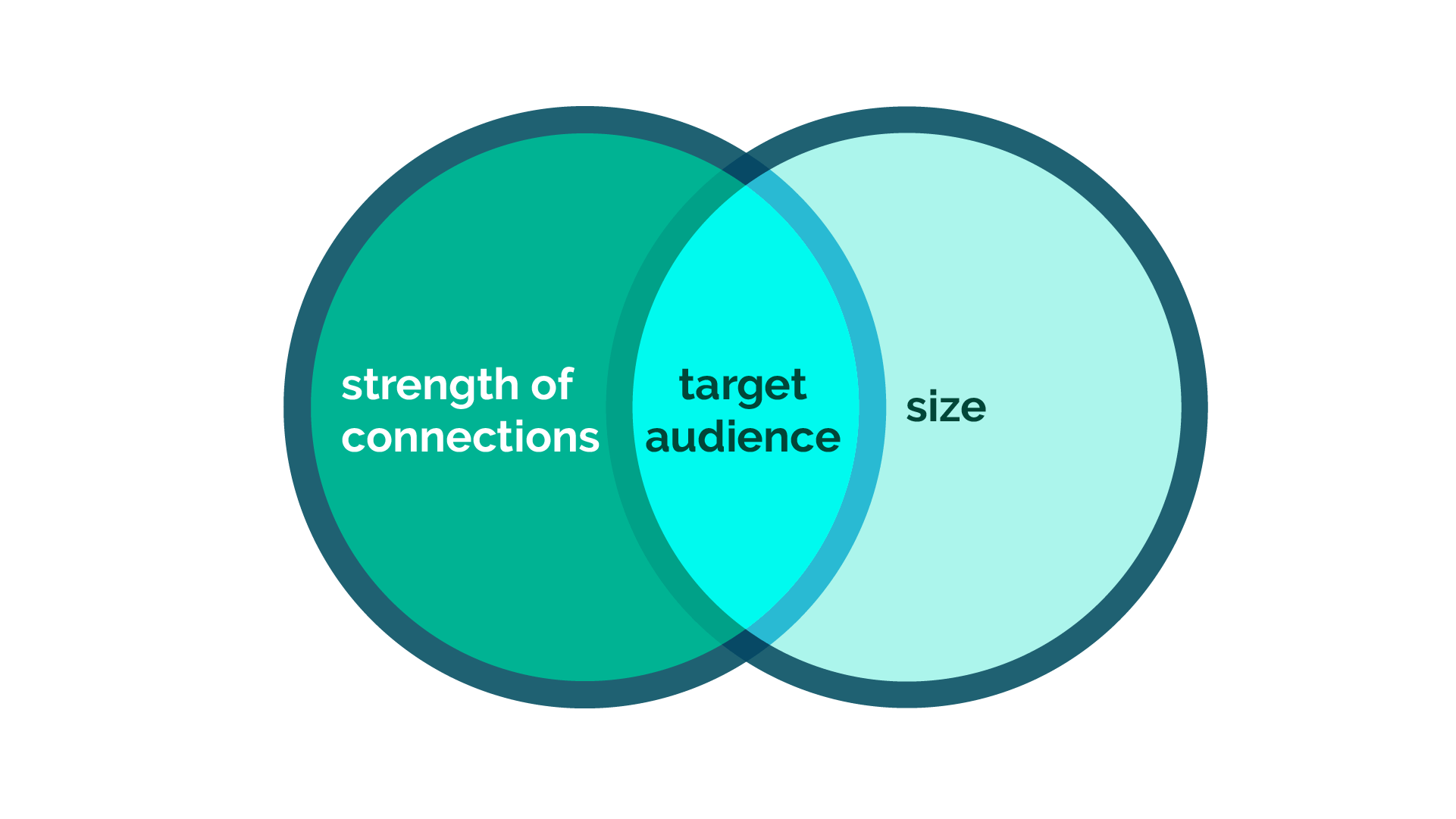
A Doughy Example
In this example, let’s imagine that you run an online gluten-free bakery and you’re hoping to launch a trend for a particular recipe. To be infectious enough to spread, this recipe will have to be unique or unusual in some way; like the whipped dalgona coffee trend for instance.
To get the ball rolling on adopting this particular behaviour (making and sharing the recipe), you need to select the perfect micro-network to target. This could be a facebook group for gluten-free individuals. However, in a sizable group the connections between members isn’t likely to be particularly strong.
Narrow this down further and you might target a location-specific gluten-free group. In this instance, the connections between members will be stronger. In a small, but active group of say fifty people, convincing a handful to have a go at cooking the recipe could have a significant impact on other members of the group.

We would suggest selecting a few individual members of the group and contacting them privately; perhaps offering them something in return for making and reviewing your recipe. Then, encourage them to post to the group they are members of.
Once a few members start to discuss the recipe, the behaviour is likely to pick up speed; assuming the recipe is appealing. At this stage, it is key that this movement does not go to waste. Once the original group is aware of your recipe and engage on posts relating to it. Then the next step is to identify other groups connected with the initial target group. This might be a group that members have mentioned before, or that many are also members of.
Repeat the process on these groups, gradually expanding your location (if you have specified one for your initial targeting). If you began in central London, expand to Greater London. From there to the wider South East, and so on.

With enough persistence and tactical targeting, your recipe will begin to spread; from group to group, connection to connection, location to location.
The concentrated exposure approach also allows you to reap the rewards of developing a network of strong and weak ties. The strength of a tie depends on how much of a connection someone has with another person or group.
For example, family members are strong ties, individuals who share a common interest are weak ties. Leveraging both weak ties and strong ties plays an important role in the spread of your idea or behaviour.
Eventually this spread will take on a life of its own, snowballing into other groups and spaces organically. With enough fuel, you can keep this fire raging until the behaviour has achieved widespread popularity.
This will give you the credibility necessary to get featured on popular blogs. Thus, snowballing the spread and social influence even further.
Focusing on concentration of exposure rather than total amount of exposure ultimately allows you to gain authenticity, credibility and growth. But without the need to spend a fortune on mass media campaigns.
Don’t Overlook Social Influence

Understanding the nature of social influence and the way ideas or behaviours gain in popularity allows you to adopt a marketing approach that is self-perpetuating, making your product and brand infectious enough that it spreads mostly organically.
If you execute a strategy that prioritises the concentration of exposure over total exposure. Then you can maximise the ROI of every single sale. This is achieved by increasing the likelihood that each sale or instance of brand exposure will result in a series of other sales and further brand exposure. All of which grows exponentially through the initial customer’s network of social connections.
This is concentrated social influence is how behaviours, products, and ideas go viral. And if you leverage these principles, you can create an infectious brand. One that—with a little initial investment—can spiral its way into the lives of countless potential customers.
